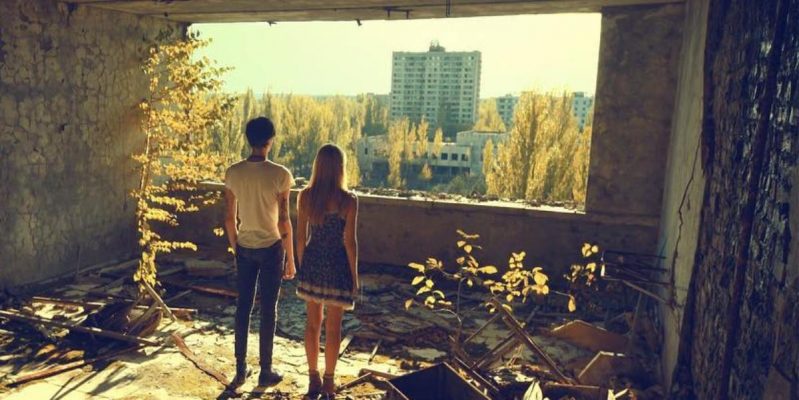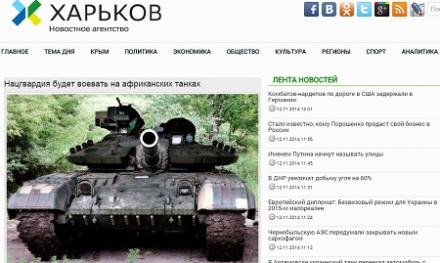The Ukrainian Institute and One Philosophy Group started a joint research initiative to outline the dominant narratives in various European countries regarding 20th-century history. Recently released and presented on 3 December 2020, the study, titled "History of the 20th Century in European Media," has analyzed narratives on determinative historical events for Ukraine's role in global processes.
Cornerstone Group analyzed the content and context of the ways European media in 2018-2019 covered key events of the 20th century that have an impact on Ukraine's role in the world. The team of analysts selected 44 major media outlets in the UK, Germany, France, Poland, Ukraine, and Russia and analyzed 7,392 articles related to the Holodomor (1932-1933), World War II with a specific focus on the Molotov-Ribbentrop Pact (1939), the Ukrainian avant-garde and the Executed Renaissance (1910-1930s), the Chornobyl disaster (1986), and the post-1991 democratization processes in the post-Soviet space.
Here we present their short main findings; see the full report here.
The five historical topics selected are among the cornerstones of Ukrainian self-determination. At the same time, they are disputed or denied by Russia to undermine Ukrainian political and cultural self-identification. Therefore, how topics are portrayed in the European media is an important indicator of the level of solidarity particular countries display either towards Ukraine or Russia.


The selection of media outlets in each country was based primarily on their popularity in a particular country as well as the reputation and publishing of articles with distinct wording, making it possible to determine the author’s or newspaper’s position. The huge difference in the number of articles from different countries is due to much more attention to the important Ukrainian issues in Ukraine and Russia in comparison to the rest of Europe.


At the same time, as Volodymyr Sheiko, General Director of the Ukrainian Institute, noted during the presentation, it is important to explain to the European audience why such historical events as Holodomor, the Ukrainian avant-garde or annexation of Western Ukraine as a result of the Molotov-Ribbentrop pact are not only domestic Ukrainian issues but important topics for the general European identity and the project of a united Europe:
"The problem is that the post-Soviet space is still more important in the mental map of an average citizen of EU countries. And Ukraine is often explained in the context of Soviet and post-Soviet relations rather than a distinct political entity. The Ukrainian voice and Ukraine as a subject in the European public space are lacking."
The report also highlights those political events in 2018 and 2019 which overlapped with peaks of media reference to the topics in particular countries, in order to determine the context in which Ukraine is important for each country. The report also analyzes the editorial policies of particular media outlets to determine how they influence the way Ukraine is portrayed.
1. Holodomor

Polish and British media were the most pro-Ukrainian in their description of the Holodomor. Polish media consistently portrayed it as a genocide organized by Stalin and the Soviet authorities. By contrast, the German media were somewhat more cautious: publications condemned Stalin’s harsh policies but stopped short of defining the Holodomor as genocide.
In 2019, German media
wrote more about the Holodomor in the context of a petition to the German Bundestag. More than 50,000 people signed the petition demanding the German Bundestag officially recognize the Holodomor as genocide, which the Bundestag refused to do.
Although French media demonstrate a general understanding of the scale of the Great Famine in Ukraine, they did not try to describe this tragic event as a genocide prepared by the Soviet authorities.
Importantly, the European countries fail to interpret the Holodomor as an event that carries significance for pan-European historical processes, comparable to the Holocaust, as it is viewed in Ukraine and was described in the numerous publications in the Ukrainian media.
Anne Applebaum’s book Red Hunger, and Agnieszka Holland’s film Mr. Jones, sparked general interest in the topic and increased the number of publications in all European countries. Thus smart promotion of films and books is among the most effective tools of cultural diplomacy, the research concludes.
Russian media parroted the Kremlin’s narrative which frames the Great Famine of 1932-1933 as having affected several regions of the USSR beyond Ukraine which supposedly means the famine was not genocide. Peaks of references to Holodomor in the Russian media coincided with the recognition of Holodomor as genocide by the US House of Representatives as well as former Ukrainian president Poroshenko’s statement that Russia as a successor to the USSR bears responsibility for the Holodomor.
2. World War II

The German media were trying to analyze the causes of the war and, in particular, its consequences manifested in the collective memory of today’s Germany. British publications were trying to understand the role of Churchill and Britain during the war. In the French media, there was an attempt to re-evaluate the long-term implications of the events of 1939-1945. Polish publications emphasized that Poland had fallen victim to two aggressors – Nazi Germany and the USSR.
The topics such as spheres of influence after the end of World War II, local resistance and dissident movements were rarely raised in the Western media under observation. Ukraine was barely mentioned in publications on World War II, with the exception of a few articles in which Ukraine was referred to in the context of Russia’s posturing.
Most Ukrainian media
hardly used the Russian term "Great Patriotic War," instead referring to the universal term "World War II," thus distancing themselves from the Soviet/Russian narrative of the war. Ukrainian articles often stated that the USSR bears the same responsibility for the outbreak of World War II as Germany.
The Ukrainian press also often referred to the Molotov-Ribbentrop pact in connection with contemporary events, for instance by establishing a parallel between the Pact and Nord Stream 2. Some Ukrainian articles also claim that we have not learned from history and may see new partitions of Europe into spheres of influence.
The analysis suggests that to this day Western European and Eastern European nations are separated by two profoundly different historical memories.
Russian media promote the following key messages on the Molotov-Ribbentrop Pact: that the Molotov-Ribbentrop Pact was a strategic necessity to deter Nazi Germany; that Western countries exaggerate the role of the Molotov-Ribbentrop Pact in causing World War II, and in fact ignore the "Munich Betrayal" and the corresponding non-aggression pacts between Hitler and Poland.
3. Ukrainian avant-garde and Executed Renaissance

All Western European outlets referred to the avant-garde as a Russian or Soviet legacy but none described it in terms of Ukrainian culture. It proves European journalists and editors fail to treat Ukraine as a cultural and to some extent political subject separate from Russia in the history of the 20th century. With the exception of Polish media, the best-known artist Kazimir Malevich was also treated as a Russian artist.
Naturally, Ukrainian media emphasized that many prominent avant-garde artists were Ukrainians, while Russian media used artists’ names to praise Russian or Soviet culture. The spark of publications in Ukrainian and Russian media was caused by Petro Poroshenko’s 2019 statement that Kazimir Malevich was a Ukrainian artist. Thus clear messages by politicians are important factors for cultural diplomacy and a more prominent Ukrainian presence in the media.
4. Democratization trends in post-1991 Eastern Europe
References to democratization processes in Eastern Europe coincided with important elections in Russia and Armenia (2018) and Ukraine (2019).
Western media
share the opinion that there is still a gap between Eastern and Western Europe while Ukrainian media describe reforms as unfinished. European media write on the issue of whether Russia will be able to democratize itself as well as other Eastern European countries will overthrow Russian influence. Rather skeptical views prevail.
Ukrainian publications did not share the dominant reading in Western media that Zelenskyy’s election confirmed the continuation of Ukraine’s democratization process.
Little attention was given to the topic in the Russian media.
5. The Chornobyl disaster

In European media, a higher number of publications coincided with the release in 2018 of the new book by historian Serhiy Plokhiy about the tragedy, and the HBO series Chornobyl in 2019. European media also used Chornobyl as a demonstration of the inefficiency of the Soviet regime. They also promoted tourism to the zone of exclusion.
A common narrative among Ukrainian media is that the catastrophe became the catalyst for the collapse of the Soviet Union.
Russian media gave little attention to the topic. They offered an overwhelmingly negative reaction to the HBO series. This demonstrates that video can be a powerful medium to enhance historical narratives.
Conclusion
“Narrative conflicts” are inevitable in the process of building historical memory, the research states. The results revealed by the study show whether European countries see Ukraine as a subject or an object of international relations, what narratives support particular interpretations of Ukraine, and what can be improved in cultural diplomacy.
In general, the Russian perspective still dominates European media, especially regarding Holodomor and WWII. To enhance the Ukrainian narrative, analysts recommend demonstrating why issues significant for Ukraine are important for Europe as well.
Another important problem is the still dominant perception of Ukraine and all of Eastern Europe as a single and vague post-Soviet space, rather than a diverse, multi-ethnic, and competing environment just like Western Europe.
Video storytelling was considered one of the most effective means for the promotion of historical narratives among the wider audiences.
Volodymyr Sheiko also announced that the research of the perception of Ukraine among professional audiences will be the next stage of the project. It is important to find out what names and historical milestones are associated with Ukraine. One of the key methods of this stage may be the analysis of historical handbooks in various European countries.
Here is a short presentation of the study:
Read also:
- Holodomor, Genocide & Russia: the great Ukrainian challenge
- Holodomor: Stalin’s punishment for 5,000 peasant revolts
- Ukraine is a major battleground for understanding WWII: historian Serhiy Plokhy
- Former Canadian Ambassador defines “top 10 mistakes” in Ukrainian reforms
- Why post-Euromaidan anti-corruption reform in Ukraine is still a success
- Slovo House — how a special Soviet apartment block for writers became their prison





